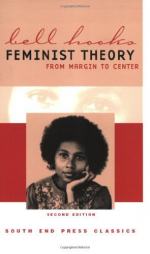
|
| Name: _________________________ | Period: ___________________ |
This test consists of 15 multiple choice questions and 5 short answer questions.
Multiple Choice Questions
1. Overall, what is the author's approach to presenting feminist ideas in this book?
(a) She presents other people's work but rarely discusses her own ideas.
(b) In general, she focuses on more recent developments in feminism.
(c) She presents male stereotypes about women then proceeds to refute them.
(d) Usually she presents early feminist ideas, points out their failings, and proposes alternatives.
2. In the author's view, what is the result, or effect, of some successful feminists' particular relationship with power?
(a) It makes men extremely jealous.
(b) It destroys less powerful women's chances.
(c) It perpetuates the very sexism they claim to strive against.
(d) It reverses gender roles in a positive way.
3. What is the author's main contention about work in Chapter Seven?
(a) The government should create more jobs.
(b) Professors are underpaid.
(c) There needs to be better statistical data about employment.
(d) Ideas and attitudes about work must change.
4. What has desensitized women and men to violence in the author's view?
(a) Its prevalence in the media.
(b) Its use in everyday language.
(c) She does not feel that women have become desensitized to violence.
(d) Their families.
5. Which one of the following ideas does not appear in the author's discussion of strategies for dealing with accepted beliefs about motherhood?
(a) Men must be encouraged to practice parenting.
(b) Men must be encouraged to believe that they are capable of good parenting.
(c) Men should be the breadwinners, not the caregivers.
(d) Parenting must also take place outside the home.
6. On what levels of culture and society is violence most likely to exist?
(a) Mostly on the interpersonal level.
(b) The author does not make a statement one way or the other.
(c) On all levels: family, community, government, international relations, etc.
(d) Mostly between countries at war.
7. How does the author view housework?
(a) As demeaning.
(b) As women's work.
(c) As extremely tiring.
(d) As creative and life-affirming-sometimes more so than work outside the home.
8. How does the author view the kind of power practiced by women from non-affluent communities?
(a) As a disappointment.
(b) As an imitation of patriarchal models of power
(c) As a new form of slavery.
(d) As an ideal kind of power.
9. Following the author's reasoning, what does a societal trend towards women identifying with and pursuing male models of power show?
(a) That women are just as capable as men.
(b) That women lack the ability to develop their own models.
(c) It does not really show us anything one way or the other.
(d) That women do not necessarily experience and wield power differently from men.
10. What assertion does the author make about lower and middle class women and power?
(a) They have given up on attaining any power in their lives.
(b) They have followed creative and life-affirming models of power.
(c) They feel comfortable with the power hierarchy.
(d) They do not have the time to create new models of power.
11. What is the author's central theory about the nature (and practice) of violence against women?
(a) Women invite violence by the way they dress.
(b) It is an innate part of male biology.
(c) It is a result of women entering the workforce in large numbers.
(d) It is a manifestation and perpetuation of traditional patriarchal thought that men are powerful and women are victims.
12. What change in attitudes towards work does the author propose in Chapter Seven.
(a) People need to try new career paths.
(b) From a male-dominated sphere to a woman-dominated sphere.
(c) From a purely money-oriented activity to an activity that enables, and enriches, life.
(d) Society needs to discourage too much focus on work.
13. What opinion does the author express regarding the connection between early feminist concepts of sexual liberty and the movement to end sexual oppression?
(a) She feels they should not be the target of conservative thinkers.
(b) They are not the same thing.
(c) They are very closely related.
(d) She does not express an opinion but promises to discuss them together in a later book.
14. What do early feminist concepts of sexual liberty represent for the author?
(a) Another manifestation of women adopting male-defined, heterosexist attitudes.
(b) A more practical approach to sex.
(c) A chance to finally be free from male desires.
(d) She does not say what they represent for her.
15. The title of Chapter Twelve, "Feminist Revolution: Development through Struggle," refers to which of the following ideas?
(a) That the feminist movement must struggle for the benefit of developing countries.
(b) Feminists create change by holding serious debates.
(c) The feminist revolution will only be won via armed struggle.
(d) That feminist-oriented change is achieved through perseverance and hard work.
Short Answer Questions
1. In her discussion of attitudes towards sexuality, what common problem does the author say that women and gay men share?
2. For the author, if "we" are to transform our present reality, what must happen?
3. According to the title of Chapter Nine, what is one of the primary goals of the feminist movement?
4. Why does society-the U.S. in particular-have this kind of reaction to the process of change?
5. Related to the issue of feminist writing, between which two groups does the author notice tension in the greater feminist movement?
|
This section contains 1,000 words (approx. 4 pages at 300 words per page) |

|




